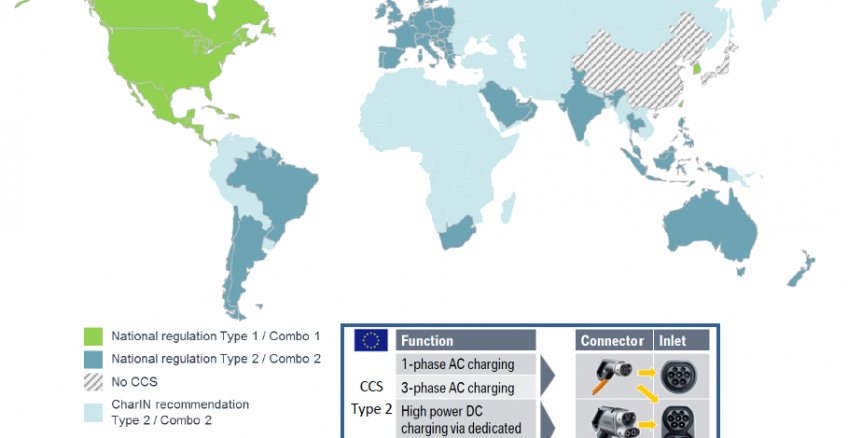DC FAST CHARGING UPDATES – WHICH DC FAST CHARGER STANDARD WILL WIN?
- By S. E. Tice
- •
- 04 Aug, 2020
- •
by S.E.Tice …
Which DC Fast Charger Standard will win, or will regions have to have multiple standards, or will the world be divided into regions using different standards?
UPDATE on Porsche Fast Charging – see below
There are four main DC Fast Charger (a.k.a. DCQC – DC Quick Charge) contenders:
- CHAdeMO used worldwide – 40-60kW limit, with tech upgrades 100kW possible
- CCS (Combined Charging System) – two versions (different in North America and Europe, rest of the world uses one of version depending on the market) – used by BMW, GM, VW, and other carmakers – 50kW typical, 350kW possible.
- Tesla Superchargers – two versions (different in North America and Europe/rest of the world) – up to 120kW
- GB/T China – only used in China – BYD among other Chinese companies use this. Mahindra and Tata electric cars also use this standard – 50kW typical – over 150kW possible.
Tesla DC Fast Charger is proprietary for good reason – Tesla built their own SuperCharger network around the world, but do the rest of the vehicle OEMs have to support multiple standards especially when the CapEx to install these chargers is nontrivial? World map Overview of AC and DC 3 Levels
Here are the connectors and inlets – most promising is the CCS Type 2 shown below (See below, Porsche makes its choice for DC Fast charger standard)

In 2010, Toyota, Nissan and Mitsubishi partnered to establish the CHAdeMO quick charge standard. Most current CHAdeMO chargers have charge speeds of 40 – 60 kW, which is fast enough to charge a Nissan LEAF to 80 percent in about a half hour. In the future that could rise to as high 100 kW as improvements are made to the technology. Nearly all of Japan’s DCQC stations are CHAdeMO. In the U.S. they make up nearly three quarters of the existing quick charge infrastructure. Worldwide, CHAdeMO passed the 10,000 station mark in late 2015, making it by far the most popular standard. Clearly the first big player in the industry was the Japanese CHAdeMO standard, supported heavily by Nissan. Mitsubishi also uses CHAdeMO, but their all-electric car sales have weakened over time, and for example, the DC inlet in the Outlander PHEV isn’t as important as it is for pure electric models (such as the i-MiEV). CHAdeMO leads, but now limps without broad support from the other manufacturers (outside Japan).
In late 2011, a second quick charge standard entered the fray. The Combined Charge System (CCS) standard got its name because it built on the existing J1772 Level 2 charge standard to allow for all three speeds of charging from a single port. (In CHAdeMO vehicles, the Level 2 and DCQC ports must be placed side by side to allow for multiple speeds.) Spearheaded by American and European carmakers, CCS chargers improved several of the practicality and cost issues associated with CHAdeMO while allowing for a higher potential rate of charge. While existing CCS chargers typically run at the same speeds as CHAdeMO, the standard allows for a theoretical maximum of 350 kW through the port—more than twice as fast as a Tesla Supercharger.
Example of preference in e-bus market – Proterra is going with the CCS Combo DC fast charging standard for its electric buses so that the infrastructure will be universal for any CCS vehicles now and in the future. The bus maker recently ordered 57 Tritium Veefil-RT chargers that supply up to 50 kW DC – enough for an overnight charge, even for batteries as large as in the case of buses.
Efacec’s First 350 kW CCS Combo DC Fast Chargers Already Up & Running. For upcoming, long-range EVs, Efacec intends to offer chargers capable of charging from 350 A and 1000 V (920 V nominal). See below, Porsche makes its choice for DC Fast charger standard.
U.S. largest non-Tesla DC Fast Charging network is EVgo. Problem with this network is low power (50kW max) and limited time allotment per charge session. EVgo and others need to step up their game to 150kW minimum. Last year, EVgo and ABB built the first ‘High-Power fast-charging station’ (150-350 kW) in the US. More stations with similar charging capacities are expected to hit the market soon. ChargePoint unveiled its 400 kW charging technology earlier this year. The company is one of EVgo’s biggest competitors and they are expected to track the deployment of those stations closely to EVgo’s own system.
Mitsubishi’s Outlander PHEV, for example, is available with quick-charge capability in Japan but Mitsubishi recently announced that it won’t offer the option in the U.S. In fact, there are currently no plug-in hybrids sold in the U.S. with a DCQC port. This is more a reflection of the added cost of the feature and limited availability of infrastructure than demand from drivers. A recent survey by one of the nation’s leading charge providers, NRG EVgo, found that given the option of both chargers at a single site, drivers preferred DCQCs 12-to-1 over Level 2 charging.
VW’s Electrify America has now announced a partnership with Walmart for the locations of those stations. ‘More than 100 Walmart stores’ will be home to Electrify America’s ‘ultra-fast’ charging stations. The company says that all the charging stations will offer a CHAdeMO (50kW) connector, plus additional dual-handle dispensers with CCS1 (50 to 350 kW) connectors. They plan for the stations to be deployed at the “more than 100 Walmart locations across 34 states by June 2019”. UPDATE – Map of planned installs UPDATE – 1st U.S. station
As Tesla realized though, the more immediate need is increasing the value proposition of their product by allowing owners to increase the distance they can drive in a given day without an extended period of charging—not attracting existing drivers to dealerships or shopping centers already within range of their homes. Tesla is also expected to eventually release the “version 3” of its Superchargers. Elon Musk hinted that “it will put 350 kW to shame”, but there’s no clear timeline at this point for the release of the technology.
UPDATE: Porsche Cars North America plans to have at least 500 350kW 800 volt CCS Type 2 fast chargers available at 189 of the U.S. dealerships and highway locations by the end of 2019. Another 20 will be installed at Canadian dealerships, but a timeline hasn’t been established. HOWEVER, No free ride at the Porsche pump – When Porsche Mission E owners pull up to the fast-charging power pump, they will be reminded that the price of the juice, needed by their premium EV, was not included in the original invoice, and for the fast charging convenience, will cost about the same as a gas fill-up. The justification for this cost is the promise to replenish the batteries to 80% of their capacity — enough to drive about 248 miles / 400 kms — in less than 20 minutes. Unlike Porsche’s decision to price its charging network alongside the cost of filling up at the pump, Tesla states that its supercharging network “will never be a profit center” despite the decision to raise its Supercharger pricing across the United States. Currently, Tesla charges an average of $0.226 per kWh to top off any of its cars not grandfathered into free lifetime Supercharging. New Tesla owners are provided a free annual credit of 400 kWh, which is enough to travel around 1,000 miles.
The automaker is working with three potential partners in the United States — ChargePoint, EVgo and Electrify America — to set up the 300-plus non-dealership fast chargers. Unlike Tesla, whose mission is “to accelerate the advent of sustainable transport…,” and offered, until recently, free lifetime Supercharging to owners of the Model S and Model X, the German automaker is a little less altruistic. The company also plans to introduce a superfast 800-volt home charger that can add 215 miles in 15 minutes. “It’s very important to us not only to (provide) speed on the track and on the road but also speed in charging,” a Porsche exec said. Additionally, 5 major automakers announced that they joined forces to deploy 400 ultra-fast (350 kW) charging stations for electric vehicles in Europe.
Porsche claims that the system deployed in the first stations already has the backend to support 350 kW charge rate, but it can currently charge at 50 to 150 kW until vehicles can support higher charge rates. They had to develop a new transformer in order to support the charge points. The new station in Atlanta is one of the first with this much power in the US.
Porsche has been on a roll, with significant expansions in its sales, profits and employee base over the past five years. Its financial cushion will be used to finance the strategic transition. “We are using our high earnings level to support an unprecedented future development plan,” Porsche Chairman Oliver Blume said in the company’s hours-long annual earnings announcement meeting, which also serves as a product introduction gala. The Porsche brand is well known worldwide. It sold 246,375 of its expensive, high-performance vehicles in 2017, generating 4 percent higher revenues of $21 billion, compared with 2016. Its operating profit rose 7 percent to $5 billion, or a stunning $20,000 on each car. The company has a particularly avid following in California, which accounted for 24 percent of the 55,470 cars it sold in the U.S. Porsche will invest $3.75 billion in new technology in the next four years, as much as it has to date, Blume said The money will be spent on derivatives of the upcoming all-electric Mission E sedan, adding hybrid versions of existing gasoline models, electric charging technology, and “smart mobility” including new digital services. Like other automakers, Porsche is under pressure from existing and pending regulations around the globe forcing it to cut greenhouse gas emissions and other pollutants. Electric car technology is currently the surest route to cleaner air, but although EV interest is growing, the vast majority of new vehicle buyers today prefer internal combustion engines.
What would’ve been smart is if, instead of trying to get into an expensive contest of sorts, automakers teamed up and worked to make their new EVs adaptable to Tesla’s already existing network of Superchargers. Tesla has seemingly made it clear it’s open to it, and the company’s free-to-inexpensive charging has helped create a perception that EVs can be more affordable than gas guzzlers. Congestion could become—and in some spots already is—an issue for Tesla, but a mutually beneficial partnership with other automakers could help expand charging infrastructure at a quicker pace. It’s crazy this isn’t a more common thing yet.
December 2018 – EV Charging Is Getting Faster — But Too Slowly. Siemens, Porsche, and BMW formed a research group called FastCharge in 2016 with the mission to make EV charging faster. BMW and Porsche thus claim initial charging times of less than 3 minutes for 100km, claiming “that’s three times faster than Tesla’s”. A Porsche Taycan test vehicle plugged into a new ultra-fast 450 kW charger developed by the group and took on enough electricity to drive an extra 62 miles in just 3 minutes. Using the same charger, a BMW i3 was able to get to an 80% state of charge in just 15 minutes.
EV Charging Is Getting Faster — But Too Slowly. Siemens, Porsche, and BMW formed a research group called FastCharge in...
Posted by QuantumWorks Corporation on Friday, March 1, 2019
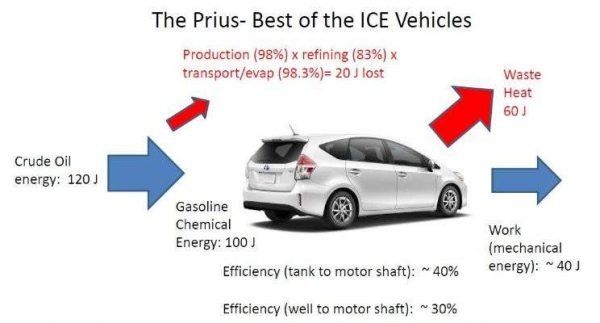
by S. E. Tice…
“The conclusion is that All-Electric Vehicles (BEVs) beat the fleet average ICE vehicle hands down in every group of states they evaluated, on a full lifecycle emissions basis, and in fact they outperform the Prius (52 mpg (4.5 L/100km)) in most states. In the most populous states, BEVs beat the Prius by a substantial margin. And that result is going to get nothing but better in future.” “overall Prius source to wheels efficiency at 0.8*0.38 = about 30% efficiency. And that’s the best ICE car you can buy…even fueled by a modern gas power plant”
Good analysis and article by Paul Martin, Chemical process development expert, and EV and renewable energy advocate, on all-electric vehicles vs the highest efficiency hybrid vehicle available today. https://www.linkedin.com/pulse/energy-cycle-efficiency-vehicles-does-ev-really-win-paul-martin/
Another good article by Paul Martin which developed some of the analysis data for the above article. https://www.linkedin.com/pulse/so-exactly-how-much-electricity-does-take-produce-gallon-paul-martin/
New data from the US EPA on power plant greenhouse gas emissions are in, and electric vehicles (EV) in the US are even cleaner than they were before. The climate change emissions created by driving on electricity depend on where you live, but on average, an EV driving on electricity in the U.S. today is equivalent to a conventional gasoline car that gets 80 MPG, up from 73 MPG in our 2017 update. As grids get greener, and EVs also become more efficient, the so-called “long tailpipe” of the EV gets shorter and shorter. In all states except Hawaii, an efficient EV beats the most efficient ICE hybrid vehicle- in some locations by a factor of 3!

In some cases multi-speed gearboxes must be used; for example for extreme performance (acceleration/top-speed), heavy load/steep grades trucking, off-road high load/grade applications.
SOME BENEFITS OF MULTI-SPEED GEARBOXES
– keeps e-motor(s) in higher efficiency range improving overall efficiency of EV powertrain to deliver more range, or alternatively same range with a smaller battery pack, hence cost and weight reduction of the powertrain.
– lower torque motor can be used which results in cost benefits and an overall reduction in the weight of the powertrain or alternatively, with same motor, it can deliver better performance at higher level of efficiency.
– offer better launch acceleration, lower noise and a higher cruising speed, while the hill climbing ability of utility vehicles can be improved.
– simpler, lighter and cheaper power electronics, and because the motor can be kept within its optimum speed range there’s less wear.
– for both high acceleration requirements and extreme top speed requirements, to avoid extremely wide RPM e-motors/controllers, multi-speed is required.
– for extreme grade, terrain and carrying load requirements, multi-speed is required or the motor/controller sizing will not be cost-effective.
HOWEVER, if you are fortunate enough to be able to design your own optimized motors/controllers for specific mission “low duty” usage profiles, as Tesla does, single-speed gearboxes do come out ahead – however in some circles, the debate rages on whether multi-speed gearboxes can be justified to benefit these non-heavy duty applications. Another approach is rather than use multi-speed gearboxes, use front and rear motors with different single-speed ratios, than the control system directs more power to the motor with the better gear ratio for the specific situation.
SOME CASE STUDIES PROVE OUT THESE BENEFITS:
1 – DCT Transmission specialist Vocis’s simulations show that their 2-4SED two-speed configuration could reduce the battery energy consumed by up to 15%
(4SED tests reached 15%) over the industry-standard New European Drive Cycle, without any significant increase in overall cost or packaging volume, as well as extending battery life and providing the potential to substantially downsize the powertrain and battery pack.
The 4SED system resembles a dual-clutch transmission configuration, but with two motors instead of twin clutches. There are two input shafts, each driven by its own electric motor. The two motors replace the usual clutches and synchronisers, allowing the next gear to be preselected before the previous one has been disengaged, and can synchronise shaft speeds. Fewer software algorithms needed compared to a normal automated gearbox, and because there are no hydraulics, there is no need for valve control.
https://newatlas.com/new-multi-speed-electric-vehicle-transmission-improves-ev-performance-and-range/11670/
https://www.autoblog.com/2011/08/19/vocis-says-two-speed-electric-vehicle-transmission-will-boost-ba/
http://www.vocis.co.uk/2-speed-electric-minibus/
http://drivesncontrols.com/news/fullstory.php/aid/4036/Two-motor_powertrain__91can_raise_EV_efficiencies_by_15_25_92.html
http://user49750.vs.easily.co.uk/wp-content/uploads/2014/05/4SED-paper.pdf
2 – Zeroshift’s concept prevents any torque interruptions during ratio changes and does not require a clutch, an issue that may have deterred EV manufacturers from fitting multi-speed gearboxes. Zeroshift studies suggest that by using a compact, multi-speed transmission and a smaller electric motor, manufacturers can gain an operating efficiency of up to 10% or more. You can use that 10% to improve EVs’ range or reduce the size, weight and cost of battery packs. The benefits of Zeroshift’s transmission would be greatest for electric delivery vehicles where the compromises in efficiency are greatest. To be able to pull away fully laden on hills requires low gearing, but the motor then runs too fast and too inefficiently on the highway. Also Zeroshift is less expensive to manufacture than a continuously variable transmission (CVT) or a dual clutch transmission (DCT), says Bill Martin, Zeroshift’s managing director.
There are several motorcycle seamless shift systems available, but the Moto GP teams are keeping tight-lipped about whose technology they are using. Two British companies, Xtrac and Zeroshift, produce the technology, but neither is willing to confirm their involvement with a particular team. Zeroshift though was willing to explain the workings of its system.
http://www.zeroshift.com/
http://www.greencarcongress.com/2010/08/zeroshift-20100819.html
https://www.highpowermedia.com/blog/3212/motogp-transmissions
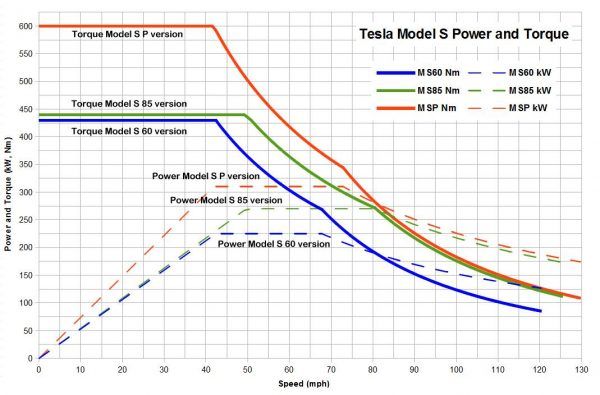
by S.E. Tice…
Why do electric powertrains not perform like ICE (internal combustion engine) powered ones in track situations? (however for drag racing, high performance electric vehicles do just fine). What’s this “throttling” all about w.r.t. BEV range, performance, and charging capability? Fielding questions like this, there seems to be continual “puzzlement” in comparing power obtainable from Electric (all-electric or BEV – battery electric vehicle) vs ICE powertrains, especially when one wants to drive the vehicle aggressively or in track applications. This article will attempt to explain some of the overview level issues in comparing the two types of vehicle powertrains.
In general, ICE powertrains, if properly cooled, can produce peak power and torque for longer durations than electric powertrains. Simply put, the power (horsepower – hp or kilowatts – kW) production chain for an electric powertrain looks like this -> battery system (ESS – energy storage subsystem) -> the controller(s)/inverter(s) -> electric motor(s). In general, these 3 main elements produce the motor shaft hp/kW (different than and usually greater than hp available at wheels). Only looking at a high power electric motor and its inverter/controller vs. a high power ICE, observe the power/torque vs. RPM curves below. For the electric powertrain, the Tesla Model S and Borg-Warner IPM (internal permanent) motor figure below also shows typical power vs. RPM trends.
High Power IPM Electric Motor based drive subsystem (top figure below) and Tesla Model S drive subsystem (dotted lines are power in kW) vs. high Power ICE (lower figure below)

By Jason B. Hunt, guest contributor
A little while back, it was written that self-driving cars will need people, too. Studies have indicated that people are generally interested in if not excited by the chance to relax fully when riding in the self-driving cars of the near future. People want to read, nap, watch TV and movies, and potentially even consume alcohol while the automated car does all the work. Yet it was suggested that the desire for this sort of ride was likely somewhat ambitious. The logic was that even if an automated vehicle can handle itself 99% of the time without problems, that last 1% – amplified over tens of thousands, and eventually millions of drivers – would result in some real problems of unacceptable frequency.
That may in fact be the case, and it may not be a problem we can fix in the next few years. Apple, however, seems to be betting otherwise. With recent reports hinting that an “Apple Car” could be coming out within the next two-to-four years, the most valuable tech company in the world is starting to make some noise as relates to driverless tech. And to put it in the most straightforward way possible, The Street writes that Apple has patents for virtual reality in autonomous cars.
What does that mean, exactly? Well, the early reports are that it means passengers in an Apple (or possible Apple tech-infused) driverless car will be able to <em>shoot zombies</em> in a VR experience that goes hand-in-hand with the car ride. It’s an idea that almost seems like a joke the first time you read it, and yet it’s one that appears to be very real. And it raises the idea that self-driving cars could be used not just to allow drivers to relax, but specifically to entertain them as they go. One wonders what other VR experiences could possibly work in this sort of situation, and these are a few ideas that come to mind.
Car Chase Shooters – This is a little bit of a creepy concept, because in a way it’s simulating combat between your vehicle and others on the road. But we’ve already taken shooters to incredibly realistic levels, so it’s probably a likely possibility. In fact, if we’re to be battling zombies, we may as well be in first-person, Grand Theft Auto-style shootouts while our self-driving cars steer us along. It would certainly help pass the time, though it could also make riding legitimately scary.
Racing Games – This seems like the obvious choice for a VR game based in a driverless car, though it might be trickier than we imagine. Racing games require pace, and there’s a chance that getting caught up in that kind of pace while your actual car is moving along at what would be a slower and less erratic pace could lead to motion sickness or something similar. That said, if the ride is smooth enough, the fact that you could be sitting in a real car seat, perhaps with a steering wheel-like controller, could make it feel incredibly realistic also.
Casino Games – There’s something to be said for some of the simplest VR experiences making it into cars as well, so as to provide passive entertainment without any of the action and speed that could cause the motion issues mentioned above. Casino gaming could mean simulated poker or blackjack tables, or even slots and arcades that come to life around you. 3D gaming styles have taken over the slot genre already, and a couple of the popular games that have thrived in 3D have been turned into VR experiences already. They’d make for excellent road trip entertainment with relatively little hassle or risk of discomfort.
Audioshield & Fruit Ninja – These are a little bit different because they’re specific games rather than genres. But in a way they’re similar. Fruit Ninja just means slashing fruit as it falls in front of you in 3D space; Audioshield works like VR guitar hero , only with punching motions instead of a plastic guitar. But both mean you’re simply staying in place and reacting to elements coming at you – something that almost sounds downright pleasant as you sit in a comfortable car seat moving along on your way.
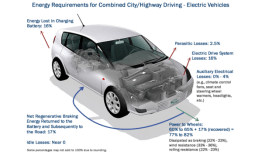
by S.E.Tice…
Battery (only) Electric cars (aka BEVs) cost LESS to Maintain than conventional ICE powered (internal combustion engine) vehicles – this is an universally agreed truth!
(Also true, they cost LESS to Operate for the consumer, partly because they are ~3x more efficient than an ICE powered car, especially if the owner “fuels” up with their own solar electric panels, battery storage, net energy metering. BEVs are the most efficient, as they use 80% of energy onboard to move the car down the road (much higher than conventional powered vehicles) but that subject is for another post)
You would be surprised to learn how many non-Tesla dealership sales people fail to mention either or both of these BEV advantages (BEV – Battery only Electric Vehicle) . BEVs cost less to maintain than conventional vehicles because:
1 – Significantly less mechanical brake maintenance from less wear due to regenerative or dynamic braking. BEVs recapture a portion of their kinetic energy for braking, by using the motor(s) as generator(s) to slow down the vehicle and put that energy back into the battery to extend range – rather than use of their mechanical brakes, which create heat and dust wearing down the pads and their rotors. (Even diesel-electric locomotives use dynamic braking, dissipating their captured energy into resistor banks, because they typically do not have battery banks OR, if they are grid tied, send the energy back to the grid.)
2 – The battery, motor, and associated electronics require little to no regular maintenance. There are fewer fluids to change than in a typical gas/diesel (ICE – internal combustion engine) powered vehicle.
3 – There are far fewer moving parts to wear out relative to a conventional ICE.
Maintenance is one of the 6 contributors to TCO – total cost of ownership. The other 5 are: Purchase, Insurance, Depreciation, Tax and “Fuel” Cost (whether dino-fuel or electric).
2015 study clearly shows lower maintenance costs in four regions around the world. Unfortunately, as far as “fueling costs”, this study does not seem to show the cost advantage of BEV owners fueling their vehicles with their own solar electric panels – https://cleantechnica.com/…/new-study-finds-electric-vehic…/
BEVs also cost less to operate – (regen braking adds 15-20% to the overall efficiency) – https://insideevs.com/bevs-80-percent-energy-move-car/
https://avt.inl.gov/sites/default/files/pdf/fsev/costs.pdf
https://www.ucsusa.org/…/a…/2017/11/cv-report-ev-savings.pdf
https://www.solar-estimate.org/…/2018-03-07-do-electric-veh…
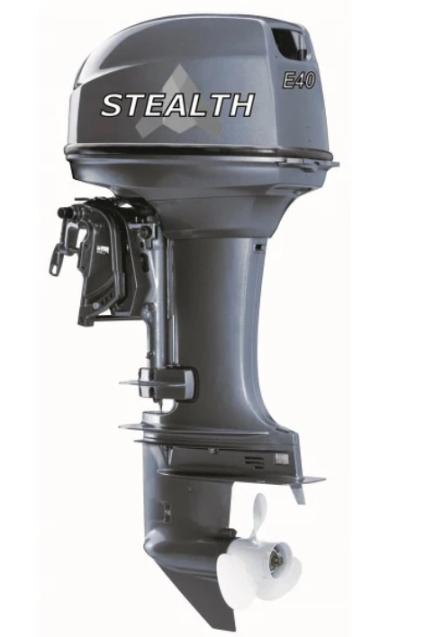
COMPARED TO COMPETITOR KITS
-> Our kits really do come pre-wired with only plugs to plug into and ready to drop into donor vehicles vs. most competitor kits are not pre-wired, all wire/cable and connectors/terminals are loose, so customer needs to cut and make all wire harnesses
-> Kits come with a complete installation video to show the customer how to install kit themselves step by step vs. most competitor kits that simply sell you a pallet of components with a wiring diagram, but no real instructions on how exactly to properly create all wired connections, mount all parts, sequence of operations and start-up of the powertrain, etc.
-> Kit has a BMS based ESS to maintain and extend battery life, a large part of the kit cost/ investment by the customer
-> More Energy for more Range with ~32 kWh ESS and higher quality battery cell tech using high performance 18650 cells vs. most competitor kits use only ~22kWh consisting of low energy density ( heavier for same energy) LiFePO4 prismatic cells
-> Higher system voltage for more efficiency of 144Vdc vs. ~96Vdc most competitors use
SE40V2.0 144Vdc Electric Outboard kit – Ideal for powering vessels under 20 feet such as RIBs, Pontoon boats Jon boats, where 40hp gas outboards are used for up to ~30mph.
Specs: 40hp/30kW at the prop. 20″ shaft length. Battery system (ESS) 144Vdc nominal – should be minimum ~26kWh (can be less for low performance duty cycle applications), 200 Amp continuous, 300 Amp peak (not included in this package) – max 180Vdc charging top-off. 179lb/81kg total weight. Electric trim and tilt. Liquid-cooled controller and brushless PMAC motor (same as used in our QWC/SEV-55kW peak drive subsystem kit) Bluetooth wireless app. Lower unit is a version of a Yamaha compatible design so all traditional lower unit parts can be purchased at your local Yamaha parts dealer. Throttle and custom cable set also included in this package. Here’s the best part, this electric outboard has all the power of the market leader “ Deep Blue 40” at the approximate price range of the market leader Cruise 10.0, finally an affordable solution! (NOTE: When ordering, we will need to get specific boat length for custom cable set that is included in package. Boat should be under 1,000 lbs gross vehicle weight with e-outboard, ESS passengers and cargo and transom rated for at least 40hp.)

